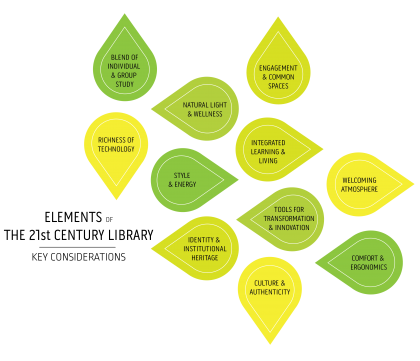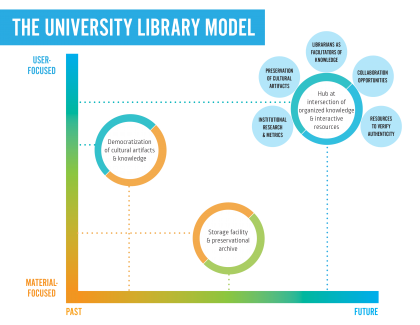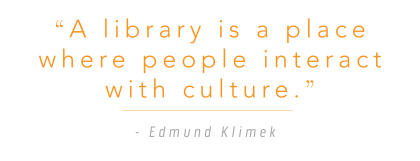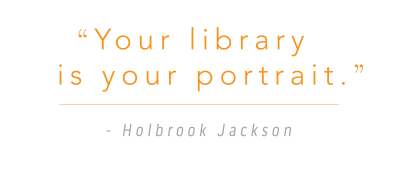1. The Library of the Future is a place where people, not books, not even information, are at the center.

People desire spaces where they can gather, where they can learn, where they can live and play. The library of the future is equipped to empower people toward knowledge.

Through technology-rich amenities, organized cultural & exhibit spaces, and an mixed-use approach to learning that incorporates everything from entrepreneurship and makerspaces to flipped classrooms and nap pods, library services of the future will meet people where they are — and transform themselves into the many iterations of the imagination. But what does that mean for the books?
2. The Library of the Future revives its origins as a great democratizer of knowledge.

Ancient libraries were formed to democratize cultural artifacts and knowledge — the great Library of Alexandria, with its extensive volumes, was an iconic building that honored the sharing of knowledge. Today, academic libraries are faced with the demands of the high expense of real estate value at the heart of academic campuses, and require new solutions.

By relocating materials off-campus and using that heart-of-campus real estate to provide spaces for interaction, libraries can offer an entirely new level of service. Tools like digitization and online catalogs are just the tip of the iceberg — with innovations in library services, libraries can bring people together to at a hub of knowledge while preserving their assets to improve longevity.
3. To achieve these opportunities for engagement, the Library of the Future must functionally preserve its assets.
For libraries to function effectively, they need to be built around the very services and processes they support. For Emory and Georgia Tech, who were combining their collections into a single shared collection, KSS designed a Library Service Center where every square foot is devoted to a seamless process. This step in preserving the library’s cultural artifacts is crucial to not only protect invaluable cultural objects, but also — and perhaps counterintuitively — to make them more useable. By improving the preservation of these materials, they are available to future generations of learners, advancing the value and longevity of the library by centuries.
The Library Service Center approach is critical to fulfilling the role of the library of the future — by creating a powerful facility off-campus, a shared collection with vastly more materials than either institution had access to before, the Library Service Center opens up heart-of-campus space for learning commons, gathering spaces, and technology-rich study and research.

The power of the dynamic world we live in is the amount of engagement we experience on a daily basis — experiences that are memorable, personal, sensational. The experience economy realizes the power of engagement — people moving across & beyond communities. For the library to harness this movement is for the library to transform itself, becoming an institution that serves both its users and society as a whole.
The road to the Library of the Future is clear — by preserving cultural artifacts in intentionally designed spaces, institutions can maximize functional longevity while offering opportunities for engagement that paint a new portrait of the future. Libraries become more dynamic, more democratized, more accessible, more people-centric. They realize their potential as iconic places at the nexus of knowledge and culture.

